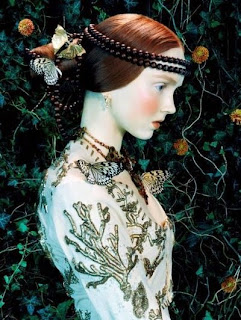Where: British Museum
When: 28 March - 29 September 2013
Mosaic of a guard dog. From the House of Orpheus, Pompeii, 1st century AD. Copyright Soprintendenza Speciale per i Beni Archeologici di Napoli e Pompei / Trustees of the British Museum
Most people are aware of the devastation wrought by Mount Vesuvius on the town of Pompeii in AD79, though some may be less aware of the other towns that were also overwhelmed such as Herculaneum.
This exhibition opens with a plaster cast of a dead dog curled up in a position that captures the agony of its dying moments. The collar signifying it was a guard dog - how poetic that it would die carrying out its duty of guarding the home. The information does spoil this romantic notion slightly by correctly pointing out this curled up position is actually due to tendons contracting from the heat but that doesn't take away the power of this opening.
Yet this first exhibit is misleading, for this exhibition doesn't really dwell on death and devastation but focuses on the lives of the ordinary folk in the towns of Pompeii and Herculaneum. Here's a chance to see how day to day Roman life played out, demonstrated by a set of remarkably preserved remains - right down to a roundel of bread where the bakers stamp still looks fresh, even if the bread itself has been carbonised.
This show is replete with well preserved artefacts from marble and bronze statues to furniture and even the sign of a local tavern. The way the two towns were destroyed by Vesuvius was slightly different so that Herculaneum has had all its wooden objects carbonised rather than destroyed. This includes a blackened baby's cot and we're told that the poor child's remains were found inside it.
The main thrust of this exhibition is to show us the daily lives in an average town. Rome may have terrific records but it's a completely different way of living - akin to comparing London living with a sleepy Lancashire village. One major surprise is how much the towns were reliant on slaves emancipating themselves with the blessing of their masters and becoming citizens of their town - demonstrating that a slaves lot didn't have to be so bad nor permanent.
For me, the most revelatory aspect of this display is the similarities to society today. Sure the Romans were much less conservative around sex but there are lots of easy comparisons to make. The bars were known for drunken fights and the politicians commissioned posters of themselves giving out bread for free - the Roman equivalent of kissing babies.
We also see that many citizens had some amazing items in their possession. A mosaic of sea creatures and a table whose single leg has been carved into a panther are two stand out pieces but they are by no means the only exemplary items here.
This excellent exhibition ends with a look at the end, as you'd expect, showing us remains of a family killed together and items that have been recovered from people who tried to flee - some took their money, others treasured possessions. It's a harrowing reminder of all the lives snuffed out, but they also hint at there being much more to discover in the remaining debris. Despite the tragedy that befell these two towns, the insight provided from their well preserved remains is a unique look back at Roman life that we wouldn't have otherwise.
This exhibition does live up to the hype and is yet another success for the British Museum. The news suggests many tickets have already sold out and people are already queuing from 7am for on the day tickets, so make sure you plan your visit well as any history or art fan will want to see this show.












